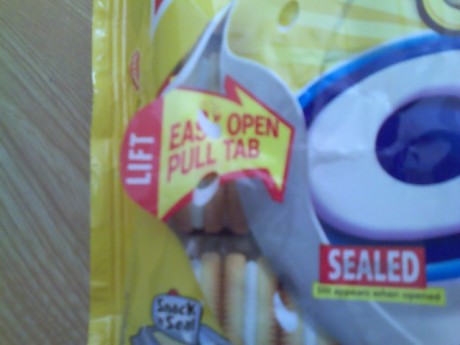After hearing the latest regarding consumer electronics chain Tweeter’s bankruptcy, I went to their site to see if they were having a fire sale. I was greeted by this:
Bad earnings. Store closings. Bankruptcy.
You’re thinking, Tweeter’s going the way of the hula-hoop, right?
Wrong. Dead Wrong.
Find out more>>.
OK, I’ll bite. The link takes you to an open letter to customers – basically a mea culpa page – explaining the root of the company’s struggles and its commitment to make things right:
We’re down, but don’t count us out.
Here’s the problem: Over the past several years we stopped doing the things that made us successful in the first place. For thirty-five years our stores were famous for cool products, people that you could talk to and service that made the competition look pale.
We strayed from what made us great.

How we’ll get back on course:
Best Products
We will only carry the newest, coolest, best products in each of the categories we sell.
Smarter People
Technology is changing fast. We’ve stepped up our training program to keep us ahead of the curve. When our salespeople, technicians and installers are smarter, everyone wins.
Outstanding Customer Service
We are renewing our focus on taking care of you, our customer, like never before. You are our number-one priority.

All this means nothing unless you are there to notice.
So give us a shot. The only way to get better is to both be better and have you there to tell. One without the other is futile.
So come and pick our brains and see if we have any. Whether you want a home theater that rivals the local cinema or one “command and control” system that’s easy to use and controls everything from your lights to your thermostat to your security camera, we’ll come up with something that’s sure to fire your imagination.
The rest is on us.
Impressive. A frank acknowledgement of past mistakes, an action plan to do things better, and a plea to give them another shot. As someone who drifted away from Tweeter over the past couple of years as their in-store customer service declined, I understand where they’re coming from. Tweeter used to be my only choice for big-ticket consumer electronics, because I knew I could get straight answers from their salespeople and never felt they were just trying to upsell me. That changed as the service fell below the premiums they were charging for their products. My last visit was at least 8 months ago, when I couldn’t grab the attention of any of the half-dozen clerks talking to one another to ask a simple question about an HDTV (LCD or plasma?). I bought one the next day at Best Buy.
Tweeter’s management finally figured out that their best asset was their loyal customer base, which they let drift away to Best Buy and other big-box retailers without a fight. The epiphany may be too late to pull them out of their death spiral, but at least one former customer is willing to give them another chance.
